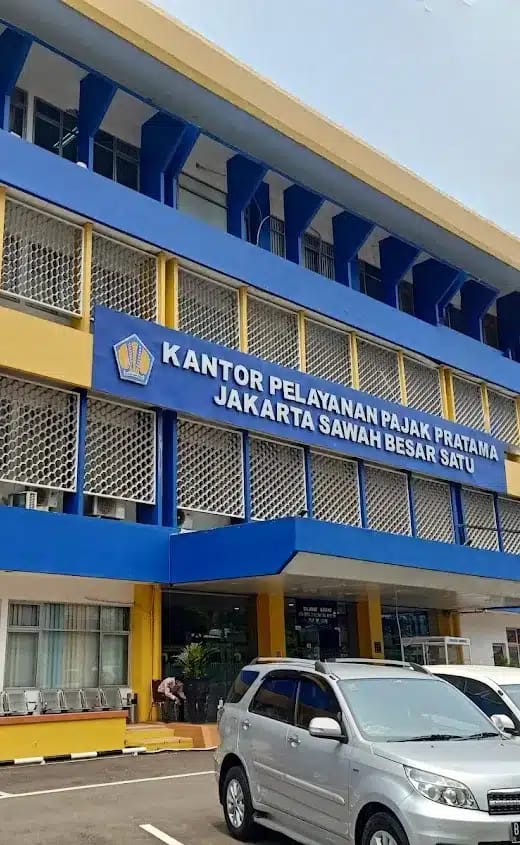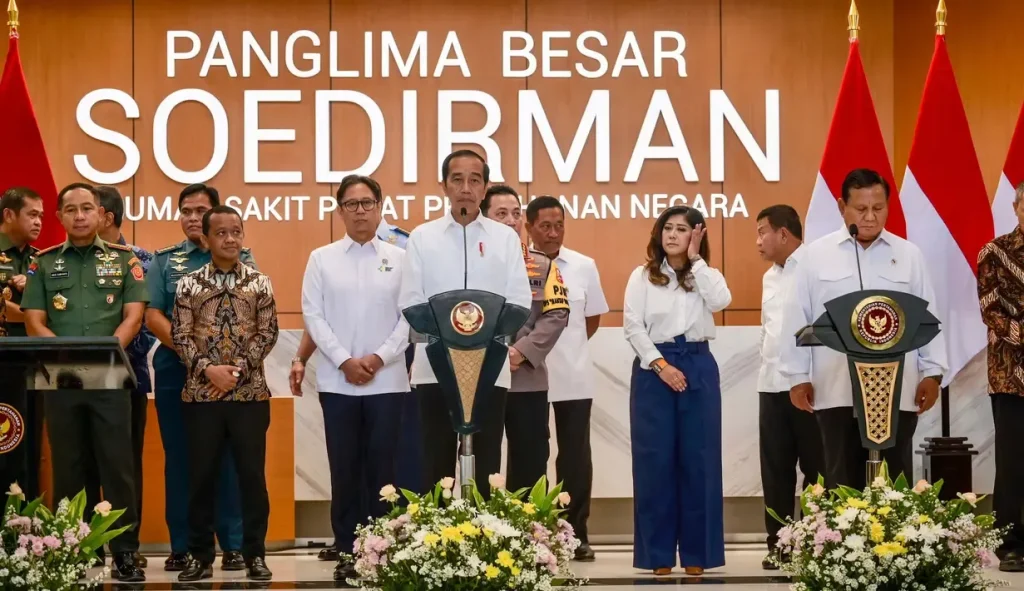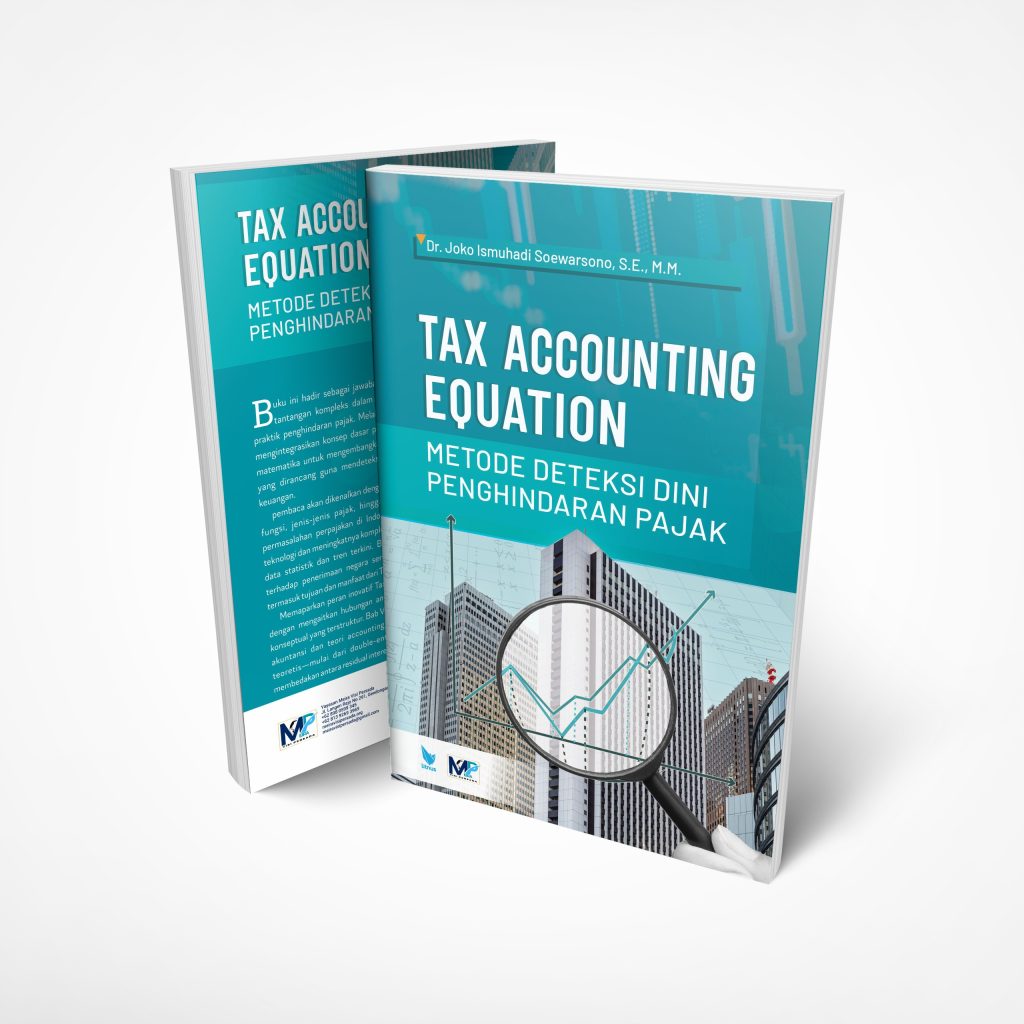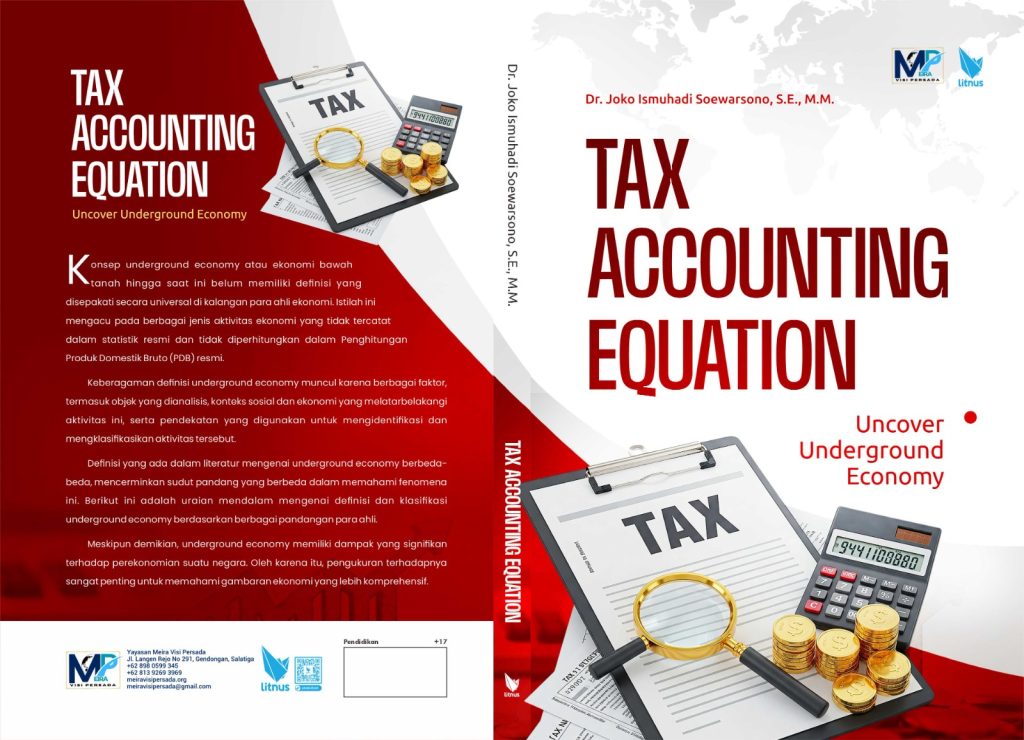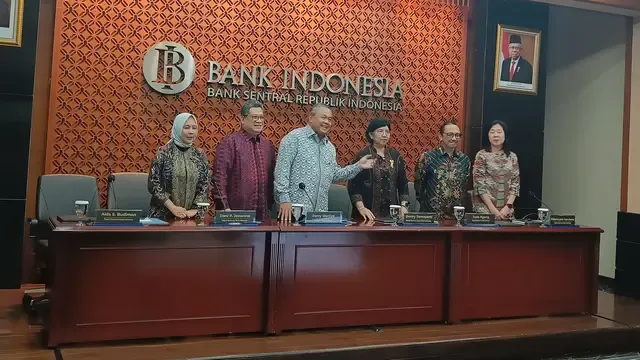
Analyzing Tax Avoidance Strategies Through Dr. Joko Ismuhadi’s Tax Accounting Equation in the Indonesian Context
- Ekonomi
Monday, 14 April 2025 00:28 WIB
Jakarta, fiskusnews.com:
1. Introduction
Tax avoidance represents a significant challenge for governments worldwide, including Indonesia. While distinct from illegal tax evasion, tax avoidance involves employing strategies within the legal framework to minimize tax liability, often by exploiting ambiguities or loopholes in tax regulations. This can lead to substantial reductions in a nation’s tax revenue, thereby limiting the government’s capacity to fund essential public services and infrastructure development. Consequently, a thorough understanding of tax avoidance strategies and the development of effective tools for their detection are of paramount importance for maintaining fiscal integrity and promoting economic fairness.
Dr. Joko Ismuhadi S., S.E., M.M., emerges as a prominent expert in this critical field within Indonesia. His extensive background encompasses both academic rigor and practical experience in tax administration. Holding a doctoral candidacy in tax accounting from Padjadjaran University Bandung and a doctorate in tax law from Borobudur University Jakarta, Dr. Ismuhadi possesses a deep theoretical understanding of taxation principles. Complementing his academic pursuits, his tenure as a Supervisor and Tax Auditor at the Directorate General of Taxes provides him with invaluable firsthand insights into the practical challenges of tax enforcement and the sophisticated methods employed in tax avoidance. This unique combination of scholarly knowledge and practical experience positions Dr. Ismuhadi as a key figure in the analysis and potential mitigation of tax avoidance within Indonesia.
Recognizing the complexities of detecting and addressing tax avoidance, Dr. Ismuhadi has developed a novel analytical tool known as the Tax Accounting Equation (TAE). This equation builds upon fundamental accounting principles to offer a framework for scrutinizing taxpayer financial statements with the specific aim of identifying early indicators of tax avoidance and potential financial irregularities. The TAE was publicly presented by Dr. Ismuhadi during a Focus Group Discussion held at the Directorate General of Taxes Headquarters, underscoring its relevance and potential application within the Indonesian tax administration system. This initiative suggests a targeted effort to equip tax authorities with specialized tools to proactively combat tax avoidance.
This report endeavors to provide a comprehensive analysis of Dr. Ismuhadi’s work on tax avoidance, with a particular focus on his Tax Accounting Equation. It will examine how the TAE is conceptualized and applied, especially in the context of strategies involving the reclassification of revenue as non-taxable liabilities. Furthermore, the report will explore the broader implications of such reclassification strategies within the Indonesian tax regulatory landscape, considering existing legal frameworks and the ongoing efforts to strengthen anti-avoidance measures.
2. Dr. Joko Ismuhadi’s Research on Tax Avoidance and the Tax Accounting Equation
Dr. Ismuhadi’s research contributions to the field of tax avoidance are evidenced through his publications and presentations, with a significant focus on the development and application of the Tax Accounting Equation. One notable work is his paper titled “Tax Accounting Equation: Early Detection of Tax Avoidance,” which is accessible on Scribd. This paper serves as a central document outlining his TAE model and its intended use by tax officers. Beyond this specific publication, Dr. Ismuhadi’s profile on ResearchGate indicates his expertise in areas such as tax planning and financial engineering. These listed skills suggest a broader research interest in the mechanisms and strategies underlying tax avoidance practices. While some of his publications, such as those concerning “Legal Protection for Default Debtors in Online Loan Agreements,” might not directly address tax avoidance, they demonstrate his active engagement in academic research within related financial and legal domains. Therefore, Dr. Ismuhadi’s primary research focus in the context of this analysis appears to be the TAE model, complemented by a broader understanding of financial and legal principles relevant to tax compliance.
In his work, Dr. Ismuhadi meticulously details the evolution of the Tax Accounting Equation from its foundational principles. He begins with the Basic Accounting Equation (BAE), which establishes the fundamental relationship between a company’s assets, liabilities, and equity. Expanding upon this, he introduces the Expanded Accounting Equation (EAE), which incorporates revenues, expenses, and dividends to provide a more comprehensive view of how operational activities impact equity. Dr. Ismuhadi further develops this into the Mathematic Accounting Equation (MAE), a rearrangement of the EAE that emphasizes the balance between all financial elements. Ultimately, for the specific purpose of taxation analysis, Dr. Ismuhadi formulates the Tax Accounting Equation (TAE) in two distinct yet related forms :
- Revenues – Expenses = Assets – Liabilities
- Revenues = Expenses + Assets – Liabilities
These formulations are strategically designed to highlight the intrinsic relationships between the income statement (Revenues and Expenses) and the balance sheet (Assets and Liabilities/Equity) from a tax perspective. By examining these relationships, the TAE aims to provide tax authorities with a framework to identify potential anomalies or discrepancies in financial reporting that could indicate tax avoidance maneuvers. This approach suggests that Dr. Ismuhadi views tax analysis as an extension of fundamental accounting principles, tailored to uncover specific patterns of financial misrepresentation.
A key aspect of Dr. Ismuhadi’s research involves identifying and explaining specific tax avoidance strategies, particularly those centered on the reclassification of revenue as liabilities. He explicitly discusses how taxpayers may attempt to mislead tax authorities by recording income, which is inherently taxable, as liabilities, which generally are not subject to immediate taxation. This tactic often involves the strategic use of Clearing Accounts, which are typically temporary accounts intended to have a zero balance at the end of an accounting period. Dr. Ismuhadi highlights that taxpayers might exploit these accounts to temporarily reclassify sales revenue into a non-taxable form, representing the initial stage of tax evasion. Furthermore, he elaborates on a second stage, termed “Recharacterisation,” where taxpayers create intricate schemes involving foreign exchange transactions, often disguised as hedging activities, which subsequently lead to the establishment of debt transaction schemes, such as back-to-back loans. The ultimate goal of this complex process is to transform the initially received funds, which originated as taxable revenue, into a new form that is characterized as debt disbursement or liabilities, thereby effectively avoiding taxation. Dr. Ismuhadi’s work underscores the sophisticated financial engineering techniques that can be employed to obscure the true nature of financial transactions and minimize tax obligations.
3. The Tax Accounting Equation (TAE) as a Mechanism for Detecting Underground Economy Activity
Dr. Ismuhadi’s Tax Accounting Equation (TAE) is presented as a specialized analytical instrument intended for the scrutiny of taxpayer financial statements, with the primary objective of enabling tax officers to detect early indicators of tax avoidance and potential financial misconduct. The core principle behind the TAE lies in its application of the accounting mathematical equation approach to identify inconsistencies or unusual patterns that might suggest deliberate misreporting. During a Focus Group Discussion at the Directorate General of Taxes Headquarters, Dr. Ismuhadi specifically proposed the TAE as a valuable “tool” for analyzing taxpayers’ financial reports, particularly for the early detection of Underground Economy Activity (UEA). This suggests that the TAE is not merely a theoretical construct but a practical method intended for direct application by tax authorities in their efforts to uncover hidden economic activities.
The TAE serves as a system for identifying potential red flags within financial statements that could warrant further investigation by tax authorities. By meticulously examining the relationships between revenue, expenses, assets, and liabilities as defined by the TAE, tax officers can potentially uncover discrepancies that might indicate the underreporting of income or the overstatement of expenses, both common tactics in tax avoidance. For instance, an unexpected and substantial increase in a company’s assets that is not accompanied by a corresponding rise in reported revenue could suggest that these assets were acquired using income that has not been properly declared for tax purposes. Conversely, a significant decrease in liabilities that is not matched by a reduction in assets might indicate that debts are being settled using undisclosed funds. The TAE, therefore, acts as an initial screening mechanism, highlighting anomalies that deviate from expected financial norms and prompting more detailed audits or inquiries.
Within the framework of the TAE as proposed by Dr. Ismuhadi, the relationship between revenue, expenses, assets, and liabilities is central to its analytical power. His first formulation of the TAE, Revenues – Expenses = Assets – Liabilities, directly connects a company’s profitability, as reflected in the income statement (Revenues – Expenses), with its net worth, as represented on the balance sheet (Assets – Liabilities). A significant imbalance in this equation, where, for example, a company reports low profitability despite a substantial net asset position, could be indicative of financial manipulation aimed at reducing taxable income. Dr. Ismuhadi’s second formulation, Revenues = Expenses + Assets – Liabilities, emphasizes that a company’s revenue should be sufficient to cover its operational expenses and contribute to its overall net asset value. An unusually low level of reported revenue in relation to the company’s expenses and net assets might raise suspicion. Dr. Ismuhadi specifically suspects that taxpayers manipulate these relationships by intentionally misclassifying revenue as liabilities, thereby distorting the expected equilibrium within the TAE and obscuring their true financial performance.
To better understand the context of Dr. Ismuhadi’s TAE, it is helpful to compare it with other fundamental accounting equations:
Table 1: Comparison of Accounting Equations
| Equation | Formula | Focus | Source | ||
| Basic Accounting Equation | Assets = Liabilities + Equity | Fundamental relationship between assets, liabilities, and equity. | |||
| Expanded Accounting Equation | Assets = Liabilities + Equity + (Revenues – Expenses – Dividends/Withdrawals) | Incorporates revenues and expenses to show impact on equity. | |||
| Mathematic Accounting Equation (as per Dr. Ismuhadi in ) | Assets + Dividend + Expenses = Liabilities + Equity + Revenues | Rearrangement emphasizing the balance of all elements. | |||
| Tax Accounting Equation (TAE) (as per Dr. Ismuhadi in ) | 1. Revenues – Expenses = Assets – Liabilities | 2. Revenues = Expenses + Assets – Liabilities | Specifically designed for tax analysis to detect potential discrepancies and tax avoidance. |
This comparison highlights that Dr. Ismuhadi’s TAE is not simply a reiteration of standard accounting equations but a specialized adaptation designed with the specific goal of tax avoidance detection in mind. By focusing on the interplay between profitability and net worth, the TAE provides a targeted lens for tax authorities to scrutinize financial data.
4. Revenue Reclassification Strategies within the Indonesian Tax Framework
The practice of reclassifying revenue as liabilities represents a significant tax avoidance strategy in Indonesia, primarily because it allows companies to potentially defer or even avoid the immediate recognition and taxation of income. Under standard tax law, revenue generated from sales or services is considered taxable income in the period it is earned. However, liabilities, which represent obligations to external parties, are generally not taxed until they are settled or realized. By strategically reclassifying revenue as a liability, a company can effectively mask its income, preventing it from being subject to corporate income tax in the current period. This exploitation of the differential tax treatment between revenue and liabilities forms the core motivation behind such avoidance tactics.
Dr. Ismuhadi specifically draws attention to a perceived loophole in Article 4 paragraph (1) of the Indonesian Income Tax Law, which he believes facilitates the reclassification of revenue as liabilities for tax avoidance purposes. This article defines income as any increase in economic capacity received or accrued by a taxpayer that can be used for consumption or to increase wealth, originating from either within Indonesia or abroad. Dr. Ismuhadi points out that the current definition omits an explicit mention of using economic capacity “to reduce debt (liabilities)”. He argues that this omission creates an opportunity for taxpayers to reclassify revenue in a manner that it appears to be used for reducing liabilities, thereby falling outside the current definition of taxable income. To address this, Dr. Ismuhadi proposes an amendment to Article 4 paragraph (1) to include the phrase “or to reduce debt (liabilities),” which he believes would close this loophole and strengthen the tax authority’s ability to challenge such reclassification strategies. This highlights a specific area of Indonesian tax law that, according to Dr. Ismuhadi, needs refinement to effectively combat this form of tax avoidance.
Taxpayers seeking to reclassify revenue as liabilities often employ sophisticated accounting and financial engineering techniques, with the use of Clearing Accounts being a prominent example. These temporary accounts can be used to initially record funds received from sales as revenue but then quickly reclassify them into a liability account, such as “Reserve for Capital Deposit”. This maneuver can be facilitated by banking services like Cash Management Services that offer Bank Overdraft Account facilities, which can function as Clearing Accounts, allowing companies to manage operational funds while awaiting payments and potentially obscuring the original classification of revenue. Furthermore, Dr. Ismuhadi describes how taxpayers might create complex layers of transactions, including foreign exchange schemes disguised as hedging, which ultimately lead to debt transaction schemes like back-to-back loans. The narrative behind these transactions is often crafted to portray the receipt of funds not as revenue from sales but as debt disbursement or liabilities, thus further concealing the true economic substance of the transactions and avoiding tax obligations.
In the context of these revenue reclassification strategies, the “substance over form” principle and the General Anti-Avoidance Rule (GAAR) in Indonesia play a crucial role. Dr. Ismuhadi himself advocates for the immediate implementation of a robust ruling GAAR, suggesting that the existing Specific Anti-Avoidance Rules (SAAR) under Article 18 of the Income Tax Law are inadequate to address these sophisticated tactics. Notably, Article 32 paragraph (4) of Government Regulation No. 55 of 2022 grants the Director General of Taxes the authority to reassess tax liability based on the principle of recognizing economic substance over its formal presentation when SAAR proves insufficient. The “substance over form” principle dictates that the economic reality of a transaction should take precedence over its legal or accounting form, particularly when the transaction is structured primarily to achieve tax benefits and lacks genuine commercial substance. While Indonesia has incorporated this principle into its tax regulations to combat tax avoidance, its effective application against highly engineered revenue reclassification strategies remains a subject of ongoing debate and scrutiny. Dr. Ismuhadi’s call for a stronger GAAR underscores the perceived need for more comprehensive and flexible rules to counter tax avoidance that exploits the letter of the law while contravening its spirit.
5. Expert Perspectives and Critiques of Dr. Ismuhadi’s Work
The provided research material does not contain explicit analyses or critiques of Dr. Ismuhadi’s specific Tax Accounting Equation (TAE) model or his views on revenue reclassification strategies by other experts in the field of taxation. This could indicate that Dr. Ismuhadi’s TAE is a relatively recent development or perhaps a more practically focused tool that has not yet been extensively analyzed in publicly available academic literature within the scope of these snippets. However, the broader discussions surrounding the necessity and implementation of a strong General Anti-Avoidance Rule (GAAR) in Indonesia implicitly suggest an ongoing dialogue and concern among tax professionals regarding the effectiveness of current measures against sophisticated tax avoidance schemes. The very fact that Dr. Ismuhadi proposes a ruling GAAR implies a recognition that existing anti-avoidance provisions might not be sufficiently robust to tackle the types of revenue reclassification strategies he describes.
Assessing the potential effectiveness and limitations of Dr. Ismuhadi’s TAE, its strength lies in its ability to provide a structured framework for identifying unusual patterns and potential discrepancies within financial statements that could signal tax avoidance. By focusing on the fundamental relationships between key accounting elements, the TAE can serve as a valuable initial screening tool for tax authorities, highlighting areas that warrant more in-depth investigation. However, like any analytical tool relying on reported financial data, the TAE might not be entirely foolproof. Highly sophisticated tax avoidance schemes, particularly those involving complex, multi-layered transactions or offshore arrangements, could potentially be structured in a way that circumvents the straightforward detection mechanisms of the TAE. Therefore, it is likely that the TAE would be most effective when used in conjunction with other tax audit techniques, intelligence gathering, and expert judgment to provide a more comprehensive approach to identifying tax avoidance.
Similarly, while the strategy of reclassifying revenue as liabilities can be a potent method for avoiding immediate taxation, its success is not guaranteed, especially in the face of increasing scrutiny based on the “substance over form” principle. If tax authorities can successfully demonstrate that the economic reality of a transaction differs significantly from its recorded form, they may be able to challenge the reclassification and impose tax liabilities. The effectiveness of such challenges often depends on the complexity of the financial engineering employed by the taxpayer and the resources, expertise, and legal framework available to the tax authorities for investigation and enforcement. The call for a stronger GAAR in Indonesia suggests a move towards enhancing the tax authority’s ability to look beyond the formal presentation of transactions to their underlying economic substance, which could pose a significant limitation to the long-term viability of aggressive revenue reclassification strategies.
6. Broader Context of Tax Avoidance in Indonesia
The landscape of tax avoidance in Indonesia encompasses a variety of strategies aimed at minimizing tax liabilities, with the reclassification of revenue as liabilities being one specific technique highlighted by Dr. Ismuhadi. General discussions on tax avoidance in Indonesia often include methods such as thin capitalization, where companies increase their debt to deduct interest payments, thereby reducing taxable income. Transfer pricing, involving the strategic setting of prices for transactions between related entities in different jurisdictions, is another common tactic used by multinational companies to shift profits to lower-tax environments. The exploitation of Controlled Foreign Corporation (CFC) rules to transfer profits to subsidiaries in countries with lower tax rates and treaty shopping, where businesses attempt to leverage double taxation agreements to their advantage, are also prevalent methods. Additionally, the use of tax havens to funnel profits through jurisdictions with minimal or no taxes remains a concern. While Dr. Ismuhadi’s focus on revenue-to-liability reclassification is specific, it fits within this broader context of businesses seeking to legally minimize their tax obligations through various financial and structural arrangements. The case of BAT diverting revenue through intercompany loans and royalty payments illustrates how financial maneuvers can be used to effectively recharacterize revenue flows, aligning with the principles discussed by Dr. Ismuhadi.
Indonesia’s tax regulatory framework includes several measures intended to prevent tax avoidance, alongside various tax incentives designed to attract investment in priority sectors. For instance, regulations like the Debt to Equity Ratio (DER) aim to limit the extent to which companies can use debt to reduce their taxable income through interest deductions. Stringent transfer pricing rules require businesses to maintain detailed documentation to justify the pricing of transactions between related parties, ensuring they reflect market values. CFC rules are in place to prevent the accumulation of profits in low-tax jurisdictions by Indonesian-controlled foreign entities. At the same time, the Indonesian government offers a range of tax incentives, including tax holidays, reduced tax rates, and investment allowances, particularly for investments in sectors like manufacturing, infrastructure, and technology, as well as in special economic zones. While these incentives are intended to stimulate economic growth, they also present potential avenues for tax optimization that, if not carefully managed, could be exploited for unintended tax benefits.
The impact of tax avoidance on Indonesia’s tax revenue is substantial, with estimates suggesting annual losses of billions of US dollars. This significant financial drain directly affects the government’s ability to invest in critical areas such as healthcare, education, and infrastructure. Consequently, the Indonesian government has been increasingly focused on enhancing tax compliance and reducing these revenue losses. Efforts in this direction include the implementation of a digital tax system to improve transparency and reduce opportunities for fraud. The emphasis on the “substance over form” principle and the introduction of the General Anti-Avoidance Rule (GAAR) are further indications of the government’s commitment to strengthening its anti-avoidance measures. Dr. Ismuhadi’s work on the TAE and his advocacy for a stronger GAAR are therefore highly relevant to the Indonesian government’s objectives of combating tax evasion and avoidance, offering specific tools and recommendations to address sophisticated tax minimization strategies like the reclassification of revenue as liabilities.
Table 2: Common Tax Avoidance Methods in Indonesia
| Method | Description | Source |
| Thin Capitalization | Increasing debt levels to deduct interest payments as expenses, lowering taxable profits. | |
| Transfer Pricing | Shifting profits between subsidiaries in different countries to minimize taxes by setting prices for intercompany transactions that do not reflect market values. | |
| CFC Rules Exploitation | Transferring profits to foreign companies in countries with lower tax rates. | |
| Treaty Shopping | Attempting to take advantage of double taxation agreements (DTAs) to avoid higher taxes. | |
| Use of Tax Havens | Funneling profits through countries with low or no taxes to reduce the overall tax burden. | |
| Revenue Reclassification as Liabilities | Recording income as liabilities rather than revenue to avoid immediate taxation, often using clearing accounts and complex financial schemes (as highlighted by Dr. Ismuhadi). |
This table provides a consolidated view of the common tax avoidance methods employed in Indonesia, placing Dr. Ismuhadi’s specific area of focus within the broader context of tax minimization strategies.
7. Conclusion and Recommendations
Dr. Joko Ismuhadi’s research, particularly his development of the Tax Accounting Equation (TAE), represents a significant contribution to the understanding and potential detection of sophisticated tax avoidance strategies in Indonesia. His work highlights the critical issue of revenue reclassification as liabilities, a tactic that exploits nuances in tax law and accounting practices to minimize tax obligations. The TAE offers tax authorities a targeted analytical tool to identify early warning signs of such manipulations by scrutinizing the relationships between key financial statement elements. Furthermore, Dr. Ismuhadi’s identification of a potential loophole in Article 4 paragraph (1) of the Indonesian Income Tax Law and his advocacy for a stronger General Anti-Avoidance Rule (GAAR) underscore the need for continuous refinement of the tax regulatory framework to effectively combat evolving tax avoidance techniques.
Based on the analysis of Dr. Ismuhadi’s work and the broader context of tax avoidance in Indonesia, the following recommendations are proposed:
For Tax Authorities in Indonesia:
- Further Explore and Pilot the Tax Accounting Equation (TAE): Given its potential for early detection of tax avoidance, the Directorate General of Taxes should consider further exploring and potentially piloting the TAE as part of their audit and risk assessment processes. This could involve developing specific guidelines for its application and training tax auditors on its use.
- Address the Loophole in Article 4 Paragraph (1) of the Income Tax Law: Consider Dr. Ismuhadi’s recommendation to amend Article 4 paragraph (1) of the Income Tax Law to explicitly include the reduction of liabilities as a potential use of economic capacity that constitutes income. This could strengthen the legal basis for challenging revenue reclassification strategies.
- Strengthen the Implementation of the General Anti-Avoidance Rule (GAAR): In line with Dr. Ismuhadi’s suggestion, efforts should be intensified to ensure the effective implementation of GAAR, providing clear guidance and training to tax auditors on how to apply the “substance over form” principle to counter aggressive tax planning schemes.
- Enhance Scrutiny of Clearing Accounts and Complex Financial Transactions: Tax authorities should increase their scrutiny of transactions involving clearing accounts and complex financial engineering techniques, particularly those that appear to result in the reclassification of revenue as liabilities. This may require specialized skills and resources in forensic accounting and financial analysis.
- Promote Collaboration and Information Sharing: Encourage greater collaboration between tax authorities, financial institutions, and other relevant agencies to share information and insights on potential tax avoidance schemes, including those involving revenue reclassification.
For Businesses Operating in Indonesia:
- Ensure Robust Tax Compliance Practices: Businesses should prioritize robust tax compliance practices, ensuring that their financial reporting accurately reflects the economic substance of their transactions and adheres to all applicable tax laws and regulations.
- Seek Expert Advice on Tax Matters: Engage qualified tax advisors to ensure that their tax planning strategies are compliant with Indonesian tax laws and regulations and do not inadvertently fall into the category of aggressive tax avoidance.
- Maintain Transparency in Financial Reporting: Promote transparency in financial reporting, ensuring that all transactions are clearly documented and can be readily explained to tax authorities if required.
- Be Aware of Evolving Anti-Avoidance Regulations: Stay informed about any changes or updates to Indonesian tax laws and regulations, particularly those related to anti-avoidance measures such as GAAR and the “substance over form” principle.
By taking these considerations into account, Indonesia can move towards a more equitable and efficient tax system that effectively addresses the challenges posed by sophisticated tax avoidance strategies, including the reclassification of revenue as liabilities. Dr. Ismuhadi’s work provides a valuable foundation for these efforts, offering both a specific tool for detection and highlighting key areas for regulatory improvement.
Reporter: Marshanda Gita – Pertapsi Muda
Share
Berita Lainnya
KPP Pratama Surabaya Karangpilang selenggarakan In House Training Penggalian Potensi Wajib Pajak Orang Pribadi
Mengungkap Ekonomi Bawah Tanah: Peran Persamaan Akuntansi Pajak
Pelantikan AHY dan Hadi Tjahjanto sebagai Menteri Baru
Tito Karnavian Resmi Serah Terima Jabatan Menko Polhukam ke Hadi Tjahjanto
Kualitas Pemeriksaan adalah Cerminan Integritas Institusi
PSSI Resmi Tunjuk Satoru Mochizuki Jadi Juru Taktik Timnas Wanita Indonesia
Rekomendasi untuk Anda

Berita Terbaru
Eksplor lebih dalam berita dan program khas fiskusnews.com
Tag Terpopuler
# #TAE
# #TAX ACCOUNTING EQUATION
# #TAX FRAUD
# #TAX EVASION


